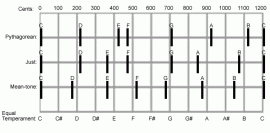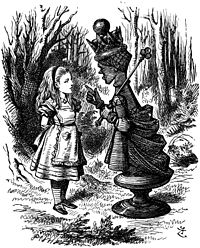The Music Master by Fletcher Charles Ransom (subtitles by me)
“Just play the white notes from D to D my dear, that’s the Dorian mode.” “Okay, but isn’t that just Dm7?”
“No no no, you’re playing modally.” “Riiiiight. So maestro, what’s the difference?”
“Goes back to the Greeks, you silly girl.”
“Who are you calling silly in that wig? It’s certainly all ελληνικά to me…”
People are always telling you that the crux of modal jazz is simplicity. So why does it seem so confusing? Let’s try and decipher the ancient Greek.
We’ll have a look here at what modes are, where they came from, how you might think about them and some practical ways to approach soloing or writing modally.
WHAT ARE MODES? A SHORT HISTORY LESSON
I promise, I’ll try to keep it short.
The names of the modes of the major scale come from ancient Greek tribes, each of which was felt to have a certain distinctive attitude and character. Associations between the modes and the tribes developed over time, depending on how they chose to play their lyres and the extent to which they were perceived as fighters, thinkers, farmers, drinkers, schemers, dreamers, lovers… So some modes were felt to sound rather martial and noble, others sensual and effeminate, others mysterious and foreboding, that sort of thing.

Some Greeks who were evidently lovers, not fighters
The modes come down to us via dark-age and medieval Western religious music (earlier Christianity was closely linked with Greek learning) – they’re often referred to as “church modes” as a result. There were quite a few errors of translation, omissions and reorganisations along the way.
The modes are usually taught by taking all the white keys on the piano and forming a new mode by starting on each one. So we have:
- C Ionian: CDEFGAB
- D Dorian: DEFGABC
- In a similar manner we derive E Phrygian, F Lydian, G Mixolydian, A Aeolian and B Locrian.
There are lots of things to bear in mind here. The most crucial point is that the modes were originally used as a collection of notes that produced certain flavours of melody (in much the same way as a harmonic minor melody still sounds Spanish or Middle Eastern to us today). People didn’t know what a chord (in the modern context) was. It took centuries for musicians to progress from melodies to using drones, then to the use of perfect 4th and 5ths and on to timidly approaching polyphony. Amazing though it may seem to a modern sensibility, harmony had yet to be invented.
From around the Renaissance onwards, when they’d finally started wrapping their heads round the concept of harmony, two of the modes became promoted to be the king and queen of Western music (the others all became pawns in the process). So C Ionian became “C Major” and A Aeolian became “A Minor”. These are modally related of course, but the new methodology insisted on the primary importance of these two scales and the fact that they are the “relative major and minor” of each other. Thereafter, we increasingly thought in terms of keys, rather than modes.

How the notes fall under different tuning systems. An ongoing battle between mankind and nature…
The other thing is that the Western scale was overhauled from the 18th century with a tuning standard called “equal temperament” (take a bow, JS Bach). This was an artificial compromise which allowed you to play complex polyphonic music performed on lots of instruments in any key. Prior to this reform, the different modes had more pungent individual characteristic sounds, due to the previous tuning systems. Equal temperament was pretty much an agreement that everything should sound a bit wrong, so that everything can be used in any combination.
There’s a lot more to this – for instance, it’s the reason traditional harmony still refers to 4ths and 5ths as perfect intervals. It’s fascinating stuff, but let’s not get bogged down here. If you want more, I suggest you start by Googling “Pythagorean comma”.
Anyway, for around the next 200 years, Western high culture music revelled in the freedom to modulate lavishly around different major and minor keys at will and an explosion of harmonic and ensemble invention resulted.
In the meantime, folk and popular music carried on doing what it had always done, which was happily using the earlier modal approach (and often the original Pythagorean tuning – in some parts of the world they still do, but they’re dying out). Then eventually the “high brow” composers got interested in the “low brow” stuff. Possibly because it was more popular than the stuff they were writing, but mainly because they were keen on asserting a national identity in their music. So modes were reintroduced into “proper music”.
End of history lesson. Hope you’re still awake. On we go, to look at the modes in a practical way.
A USEFUL MODERN WAY OF THINKING ABOUT MODES
It can be a bit unhelpful to just be told “oh, modes are just the same scale starting on a different step”. It may be correct, but it’s not very helpful.

“I’m Queen Minor, who are you?” “Just Alice Dorian, ma’am”
We’re used to hearing music in relative majors and minors. We’re so used to it that it’s probably impossible to unlearn it, but that can be a useful way in. All modes are either major or minor in flavour, depending on the character of the third:
- C Ionian (aka C Major): CDEFGAB
- A Aeolian (aka A Minor): ABCDEFG
Now if the important parts are the starting point and the quality of the third, there are all sorts of different ways of filling in the gaps to make a full scale:
- Some kind of major: R ? M3 ? ? ? ?
- Some kind of minor: R ? m3 ? ? ? ?
The modes of the major scale give us other variations of major and minor, which have different flavours. So we have (and for this bit, I’m going to shift all the starting points onto C for comparison):
MODES WITH MAJOR FLAVOUR
- C Ionian (C Major): CDEFGAB
- C Lydian: CDEF#GAB (from the home scale of G)
- C Mixolydian: CDEFGABb (from the home scale of F)
MODES WITH MINOR FLAVOUR
- C Aeolian (C Minor): CDEbFGAbBb (from the home scale of Eb – its relative major)
- C Dorian: CDEbFGABb (from the home scale of Bb)
- C Phrygian: CDbEbFGAbBb (from the home scale of Ab)
- C Locrian: CDbEbFGbAbBb (from the home scale of Db)
“Hang on a minute”, you might be saying, “C Mixo is just C7 and C Dorian is just Cm7, right?” Yes indeed, but the point is that in modal music:
They are the home scales/chords and don’t resolve the way C7 would go to F or Cm7 would go to F7, then to Bb.
One more point – there are other ways of filling in the gaps. For instance, melodic and harmonic minor scales also have modes, although they don’t have the Greek names and are usually just referred to by Roman numerals. For example, we could use:
- EFG#ABCD – the V mode of A harmonic minor. It’s major in flavour.
- BCDEbFGA – the VII mode of C melodic minor. It’s also major in flavour (the Eb is the same as D# and the D may look like a minor 3rd but in this context it’s actually a #9th). This is what you might play over B7alt, by the way – melodic minor modes are very useful in modern jazz).
SOLOING AND COMPOSING IN MODES
Playing or writing music in modes involves consideration of:
- the particular scale step that is most characteristic of the mode
- the idea that each mode contains primary chords – a tonic chord and two “dominant equivalents”
The characteristic scale step will appear in three triads, one of which is the diminished triad that appears in all major modes. Set aside the diminished triad – the dominant equivalents are the remaining two triads that contain the characteristic scale step.
For instance, using the white-key modes for ease of visualisation:

Miles Davis and Bill Evans on the legendary Kind of Blue session
Ionian and Aeolian are just what we know already as major and minor. These privileged modes have evolved their own set of rules. You probably don’t need to be told that tunes in C major tend to hang around C F G, or tunes in A minor tend to hang around Am Dm Em (but in minor the V chord is often altered to E so as to include the leading tone G#).
Dorian has the characteristic scale step on the natural 6th, which in D Dorian is the note B. The tonic is Dm, the dominant equivalents are Em and G.
So the primary chords of the mode are i ii and IV.
Phrygian has the characteristic scale step on the flat 2nd, which in E Phrygian is the note F. The tonic is Em, the dominant equivalents are F and Dm.
So the primary chords of the mode are i II and vii.
Lydian has the characteristic scale step on the sharp 4th, which in F Lydian is the note B. The tonic is F, the dominant equivalents are G and Em.
So the primary chords of the mode are I II and vii.
Mixolydian has the characteristic scale step on the flat 7th, which in G Mixolydian is the note F. The tonic is G, the dominant equivalents are Dm and F.
So the primary chords of the mode are I v and VII.
Locrian is a pain in the arse, because the tonic chord is the diminished triad, so harmonically fundamentally unstable, which isn’t what we want from a tonic. It can just about be done though, with a lot of creativity and a bit of rule-bending…
Melodies and solo lines should be weighted to emphasise the characteristic note, otherwise the flavour of the specific mode gets lost. Consider this – if you play in Dm and don’t play the 6th at all, you could be in D Aeolian (which has Bb as the 6th) or in D Dorian (which has B as the 6th) but how is the listener to know which? In fact, in our major/minor conditioned world, they’re likely to conclude that you’re in D Aeolian unless you strongly indicate otherwise.
The chords should focus on the tonic triad and the dominant equivalent triads, with the other triads still available for use, but regarded as secondary. There are also plenty of possibilities for using 7ths, 9ths and so forth on the primary triads.
(Temporary alterations are often used. In particular, the diminished triad in every mode is often altered by either lowering the root or raising the diminished 5th – obviously you can’t do this in that damned Locrian…)
If this all sounds a bit hifalutin, consider popular tunes such as:
On Broadway – C Bb repeating (that’s I VII in C Mixo)
Oye Como Va – Am D repeating (that’s I IV in A Dorian)
It could also be argued that the blues is Mixolydian in flavour because the tonic chord contains a flat 7th. But then the blues doesn’t fit too well with traditional harmony…
Phrygian tunes (Ole!) usually seesaw between I and II, eg Em and F in E Phryg. Although in what is generally known as “Spanish Phrygian”, the I chord is often altered to major, eg E and F. This gives it the flavour of a mode of harmonic minor, in this case the V mode of A harmonic minor that we saw above.
Incidentally, theoretically the flat 6th and major 7th (in this instance of A harmonic minor, F and G#) are just one scale step apart. They are actually an augmented 2nd apart, but the fact that an augmented 2nd sounds exactly the same as a minor 3rd was a bit hard to swallow for Western theorists, because it sounds more like an interval than a scale step. This is one of the reasons why classical music teaches two versions of melodic minor – one for going up and another for coming down. Other traditions (including the Arabic from which flamenco is derived) were not so squeamish.
A COUPLE OF EXAMPLES IN JAZZ COMPOSITION
So What (D Dorian)
Includes the characteristic natural 6th (B) in the bassline, which is an integral part of the melody as the “call”. The “response” also emphasises the B, and is comprised of m11th voicings on E and D – II and I in the mode. Miles hangs his solo around lightly embellished triads based all the way up Dm11, and often touches on the natural 6th of the mode. If you think about it, piling the primary triads on top of each other (in this case, Dm, Em and F) gives you the tonic chord in thirds all the way up to the 13th.
Nardis (E Phrygian)
Makes lots of use of the characteristic b2nd (or b9th, if you prefer) (F). The chords for the distinctive opening phrase of the melody move between I and II of the mode. Note that the bridge contains what seems like a temporary II V I in C, but this doesn’t sound like the C chord is a point of resolution. Don’t believe me? Play the tune and stop at the C chord in the bridge. The tune obviously isn’t over, is it?
(Incidentally, when you write a chart for a modal tune, you tend to write with the key signature of the related Ionian – so both these tunes have the key sig of C, On Broadway has the key sig of F and Oye Como Va has the key sig of G.)
Contentious stuff, this, and I’ve probably made a rod for my own back. Feel free to comment below.






I’m probably missing something here that could be resolved by getting my horn out and playing over a few modal charts, but what is meant by the ‘characteristic scale step’? Is there an obvious theoretical definition I’m missing, or is the proof in the pudding?
Hi Cam.
Goes back to the “flavours of major and minor” concept. Assuming the major or minor character is established by the 3rd, the characteristic scale steps of the modes are the ones that prove which mode you’re in. Think in terms of the alterations away from Ionian for major and Aeolian for minor:
What makes Lydian different from Ionian is the sharp 4th.
What makes Mixolydian different from Ionian is the flat 7th.
What makes Dorian different from Aeolian is the raised 6th.
What makes Phrygian different from Aeolian is the flat 2nd.
What makes Locrian different from both Aeolian and Phrygian is the flat 5th.
(As ever, Locrian is the troublemaker in the scheme. But while playing a b2nd could imply Phrygian or Locrian, the latter is much rarer and the b5th is required to prove that’s where you are.)
Incidentally, you can also think in terms of ranking the modes derived from the major scale from bright to dark, based on the number of raised (brighter) and lowered (darker) tones. So brightest to darkest:
Lydian (major with the 4th raised – the maximum possible number of sharps)
Ionian (vanilla major and base camp, we’ve lost the brightened 4th)
Mixolydian (major with b7th)
Dorian (minor with b7th, in this scheme the first and brightest type of minor)
Aeolian (minor with b7th and b6th)
Phrygian (minor with b7th, b6th and b2nd)
Locrian (minor with b7th, b6th, b2nd and b5th – the maximum possible number of flats)
Hope this helps and thanks for dropping by.
Right, now I get it! That’s helped immensely.
For a variety of reasons I haven’t been able do anything but play notes off a page for a few weeks and I’m dying to get a chance to play around with some of these colours. This explanation gives me a useful way in, I think.